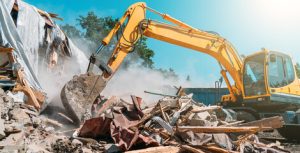
If you notice gaps around doors or windows or if the floor is sagging, you need foundation repair. Professionals know the right techniques to use for your specific home and soil conditions.
For a pier and beam foundation, contractors can use shimming to fill the space between a bowed wall and its support. It also helps level the foundation. Visit Foundation Repair Greensboro NC for more details.
Concrete Pilings
Pilings are long columns, constructed primarily of concrete, that are sunk below ground to support your home’s foundation. They’re not the same as piles or piers, which can be made of steel or concrete, and they are often used in areas that have expansive clay soils (Texas is one such example).
Whether your home needs repair because of soil shifting or your foundation has settled, repairing it with concrete pilings will give it an added level of strength from below while also helping to lift your home back up to its original position. These deep support structures are especially useful in areas where other types of foundations may fail because they transfer a building’s load to the deeper earth—typically bedrock or a harder layer—rather than the weaker soil above.
Concrete piles are commonly used as integral support structures in a wide range of construction projects. They can withstand heavy loads and can be driven in to difficult soil conditions, making them an excellent choice for foundations of buildings, bridges, and maritime structures.
These types of piles can be built on site using a variety of materials, including timber—an old technique that’s still utilized worldwide—steel piles of tubular or box sections, and precast concrete piles that can be manufactured in controlled environments to match your specific project specifications. These piles can be designed with tapered, uniform, or octagonal cross-sections and a variety of base shapes and are frequently incorporated into structures such as jetties, chimneys, coal handling structures, water tanks, and power stations.
Some piles are mechanically formed with an enlarged base diameter to improve the soil’s bearing capacity (under-reamed piles). They can be used where pore water pressures need to dissipate and where soils with high moisture content and/or water tables are present. Other piles are reinforced in-situ with a mixture of lime/quick lime, fly ash, sludge or other binders to increase their bearing capacity—a process called in-situ reinforcement.
Concrete Piers
Piers are used to stabilize concrete foundations that have been sinking and shifting because of soil conditions. These vertical structural supports extend deep into the ground to bypass unstable clay soil layers and reach solid bedrock where they transfer the weight of the building. Once they’re in place, they stabilize the foundation and prevent future movement.
Using a foundation repair company that specializes in pier installation can help you find the right solution for your home. Research the contractor’s reputation, years in business, and any specialized training or certifications they have. A knowledgeable professional will be able to identify the underlying cause of your problems and recommend the right type of pier to fix them.
Concrete piers are used for both new construction and to repair existing foundations that have been damaged by settlement or shift. The process of installing them typically involves excavating the affected area to access the foundation and either pushing or screwing the piers into the ground. After the piers are in place, the excavation is backfilled and the foundation is stabilized.
Both push piers and helical piers are effective at stabilizing heavy structures such as homes. With push piers, brackets are attached to the foundation’s footing, and hydraulic equipment is used to drive them into the ground. They’re stacked on top of each other until they reach stable soil or bedrock where they transfer the structure’s weight.
With helical piers, a helix-shaped plate is welded to a steel shaft that’s inserted into the ground. The helix plate provides more anchoring strength than a push pier, so they’re often preferred for heavier structures. Once the piers are in place, they’re loaded-tested by hydraulic jacks to ensure that they can support the structure’s weight.
Steel Piers
Steel piers are heavy-duty, hydraulically driven support points that help stabilize foundations and other structures. They are more effective than concrete pilings at transferring the weight of the structure to stable soil layers or bedrock. This helps prevent future movement and offers a stronger, more durable solution to foundation issues.
There are two types of steel pier systems: push piers and helical piers. Both are constructed from high-strength, galvanized steel. Both systems involve excavation around the affected foundation footing. Once the piers are in place, they are load tested with a hydraulic jack. Once a sufficient load test has been completed the piers are affixed to wall brackets. The piers are then used to lift the foundation back to its original elevation and stabilize it.
Unlike concrete, steel piers can withstand environmental pressures and don’t crack or shift under stress, making them a long-term solution for your foundation. Additionally, they require less excavation and create fewer resources during installation, which makes them a more environmentally friendly option than concrete.
Steel piers are also more adaptable than concrete, making them suitable for a variety of soil conditions. They can be used for homes, garages, sheds, decks and patios. They’re ideal for areas with limited access, as they can be installed under crawl spaces or in hard-to-reach locations. Additionally, they’re quick and efficient to install, which reduces the impact on landscaping and other property features. As a result, they’re an excellent choice for homeowners looking for a lasting foundation repair solution that provides structural stability and cost-effectiveness. Contact us today to learn more about how steel piers can benefit your home.
Helical Piers
Helical piers (or piles, as they are sometimes called) are a deep foundation system that is used to support structures and stabilize homes. They are made of steel and have a central pin with helix-shaped bearing plates welded to it. They are designed to transfer both vertical and horizontal loads into more stable soil layers below the surface. They can be installed in a variety of soil conditions, including clay and dense sand. Because of this, helical piers are a good choice for areas where traditional concrete piers cannot be installed due to soil composition or other factors.
Helical piles can be installed quickly and with minimal disturbance to the surrounding area. They are also versatile and can be used in a wide range of situations, from supporting new construction to providing stabilization for existing structures.
During the installation process, an engineer will evaluate the soil conditions and load requirements to determine the appropriate helix size and spacing. Once the helix is in place, it is mechanically screwed into the ground using specialized equipment until it reaches a predetermined load-tested depth or load-bearing stratum. A remedial bracket is then attached to the helix and connected to your home’s footing.
Helical piers are a cost-effective solution to foundation problems. However, it is important to work with a qualified contractor to ensure that your home’s issues are correctly diagnosed and repaired. If a helical pier is not installed in the proper location or for the right reason, it could result in more serious structural damage and further instability for your home. This can be a very costly mistake. If you are considering helical piers for your home’s repair, Alliance Inc. would be happy to provide a free inspection and estimate.
Crack Injections
Crack injection is a non-invasive method that uses epoxy to stabilize concrete walls and slabs. This is an excellent solution for repairing cracks without disturbing the foundation or affecting the building’s daily use. This solution can also address other structural issues that lead to cracking like soil settlement, but should always be used in conjunction with determining and remedying the cause of the cracking.
To start the process, a foundation repair expert will drill or glue injection ports into the bottom of the crack. They will then bridge each port with an epoxy paste that will contain the epoxy and protect the surface from the pressure of the injection. The number of injection ports will vary depending on the size and length of the crack. Ideally, each port will be spaced 8″ apart along the crack’s length.
The injection material can be either an epoxy resin or a polyurethane foam. Your contractor will decide which is best based on their experience and the specifics of your project. They will then carefully insert the injection material into the crack starting from the lowest point of the crack and working their way upwards. The injection material will react with the concrete and expand, filling and sealing the crack.
Once the crack has been sealed, it will provide a watertight seal that can last for years. Its hydrophobic properties mean that it will repel water so if water does reenter, it will not be able to re-crack the concrete and cause further damage. This type of injection has been proven effective in real-world applications, such as at the Gorilla Exhibit at Omaha’s Henry Doorley Zoo where leaking cracks were causing structural erosion and visible stains from rust and efflorescence.




